Da Nang Food: 10 Unique Specialties In Da Nang
When it comes to Vietnamese cuisine, Da Nang food stands out as a perfect blend of Central Vietnam’s culinary traditions with coastal influences. As someone who’s explored countless Vietnamese food destinations, I can confidently say that Da Nang offers some of the most unique and flavorful dishes you’ll find anywhere in Vietnam. Whether you’re a food enthusiast planning your first trip or a seasoned traveler looking for authentic local experiences, this comprehensive guide will walk you through the must-try Da Nang specialties that make this coastal city a true culinary paradise.
Why Da Nang Food Is Different from Other Vietnamese Cuisines
Before diving into the specific dishes, let’s understand what makes Da Nang cuisine so special. Unlike the subtle flavors of Northern Vietnam or the sweet-leaning Southern dishes, Central Vietnamese food—particularly in Da Nang—is characterized by its bold, complex flavors and generous use of chilies and herbs.
The city’s strategic coastal location means fresh seafood plays a crucial role in local dishes, while the influence of the former royal capital Hue adds sophisticated touches to even the simplest street food. This unique combination creates a culinary landscape that’s both diverse and deeply rooted in tradition.
The Top 10 Must-Try Da Nang Food Specialties
1. Mi Quang (Quang Noodles) – The Pride of Central Vietnam
Mi Quang isn’t just a dish; it’s Da Nang’s culinary ambassador. This vibrant noodle soup features wide rice noodles in a concentrated broth that’s neither too heavy nor too light. What sets Mi Quang apart from other Vietnamese noodle soups?
- The broth is made from a combination of chicken, pork, and sometimes shrimp
- Turmeric gives it a distinctive yellow color
- Rice paper crackers (banh trang nuong) are served on the side
- Fresh herbs including banana blossoms add unique textures
For the best Mi Quang experience, head to Mi Quang Ba Mua at 19 Tran Binh Trong Street, where locals have been enjoying this specialty for over 30 years. The authentic preparation methods here remain unchanged since the restaurant’s opening.
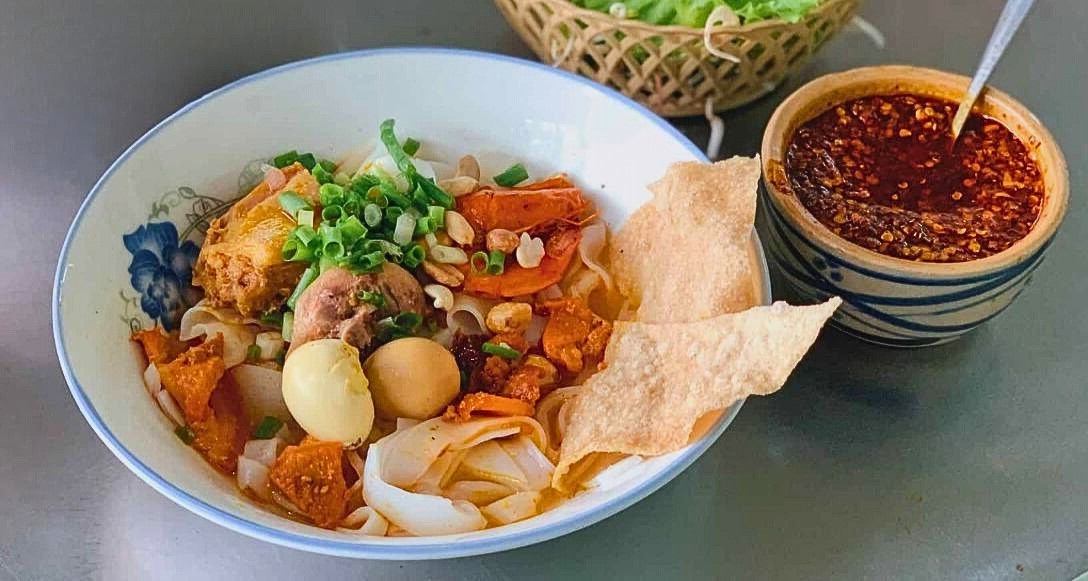
2. Banh Trang Cuon Thit Heo (Rice Paper Rolls with Pork)
This Da Nang street food favorite exemplifies the city’s love for fresh, simple ingredients prepared with care. Unlike spring rolls found elsewhere, these use a two-layer rice paper technique that creates an interesting textural contrast.
The classic preparation includes:
- Thinly sliced boiled pork belly
- Green mango and green banana for tartness
- Fresh herbs including perilla and cilantro
- Special fermented anchovy dipping sauce (mam nem)
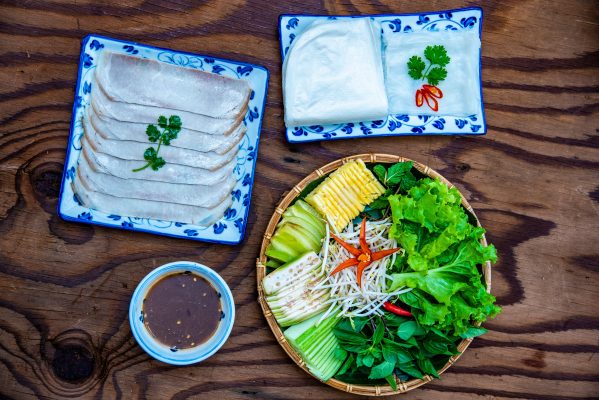
3. Com Ga (Chicken Rice)
Da Nang’s Com Ga might seem simple, but it’s elevated through careful preparation. The rice is cooked in chicken broth with pandan leaves, creating an aromatic base that perfectly complements the tender poached chicken.
What distinguishes Da Nang Com Ga:
- Rice has a distinctive yellow color from turmeric
- Chicken is torn into bite-sized pieces, not sliced
- Served with papaya salad and special herb mix
- Accompanied by a light soup made from the poaching liquid
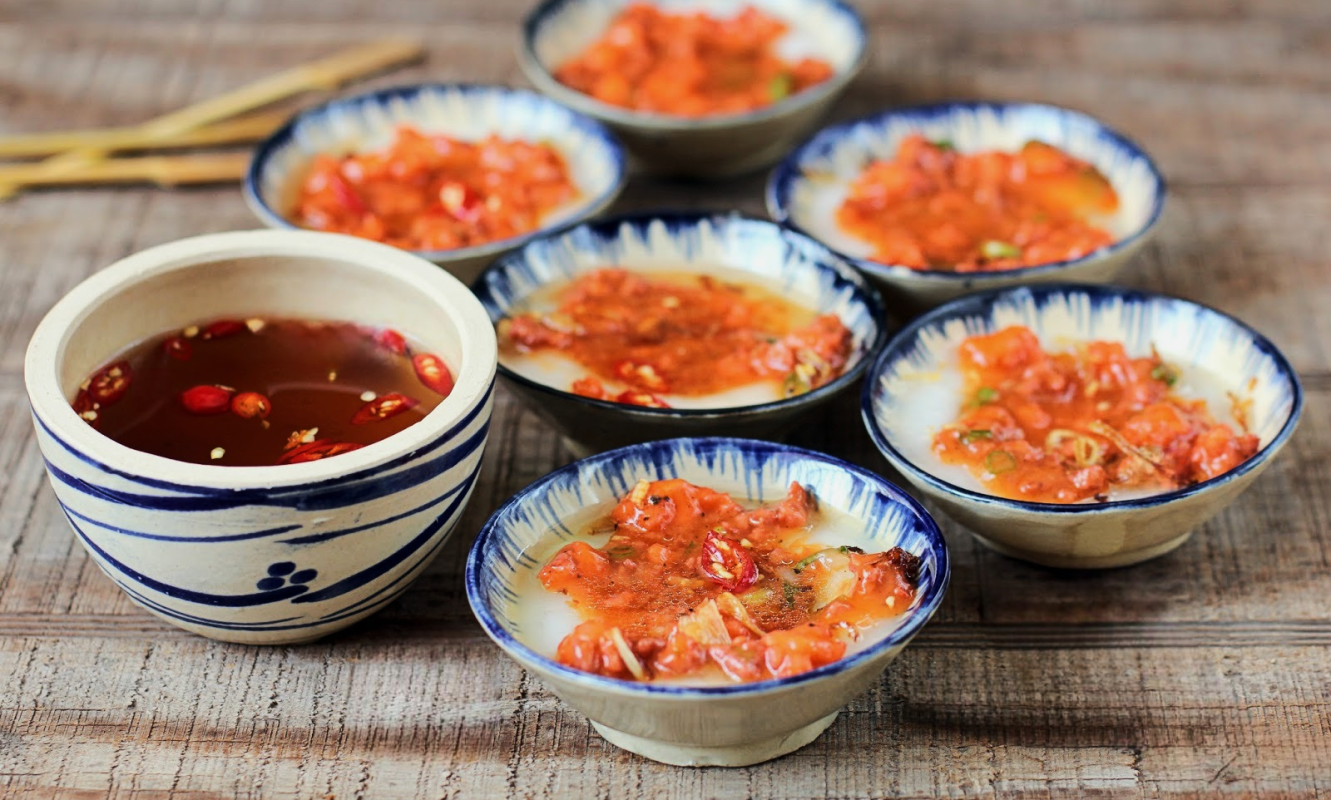
4. Bun Cha Ca (Fish Cake Noodle Soup)
Bun Cha Ca showcases Da Nang’s coastal heritage perfectly. This hearty soup combines handmade fish cakes with vermicelli noodles in a clear, flavorful broth. What makes Da Nang’s version special is the use of local fish varieties like ca thu (mackerel) and ca nuc (round scad).
Key components include:
- Freshly made fish cakes with a bouncy texture
- Light broth simmered from fish bones
- Fresh dill and spring onions
- A squeeze of lime for brightness
Visit the morning market at Han Market for the freshest Bun Cha Ca, where vendors start serving as early as 6 AM. Learn more about Vietnamese seafood preparation techniques in our detailed guide.
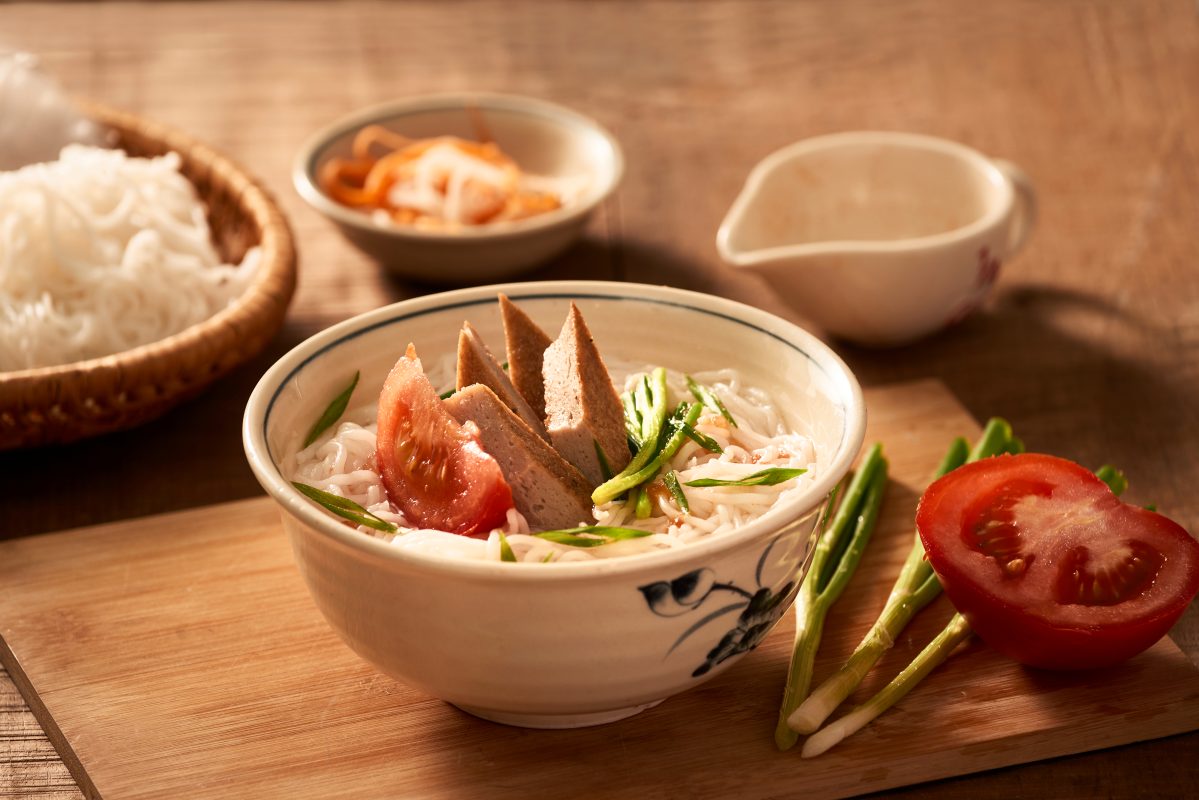
5. Bún Mắm (Fermented Fish Noodle Soup)
Bún Mắm is a noodle dish with a special fermented fish broth, which gives the dish a rich and spicy flavor. It originated in the Mekong Delta but has also become popular in Da Nang. It is usually eaten for lunch or dinner and is often served with fresh vegetables, herbs and fruits.
Bún Mắm consists of rice noodles, topped with various meats such as pork belly, shrimp or fish cake. It is often served with a plentiful platter of crunchy vegetables and Vietnamese herbs, limes and fresh chilies. The broth is murky, salty and flavored with the granddaddy of all Vietnamese condiments, fermented fish is made from fermented fish sauce (Mắm), a condiment made from fish, salt and water, fermented for months or years.
The broth is also seasoned with sugar, tamarind, garlic and chili and boiled with pork bones, dried shrimp and lemongrass. The dish is often garnished with fresh herbs such as coriander, mint and basil and served with lime, chili sauce and fish sauce.
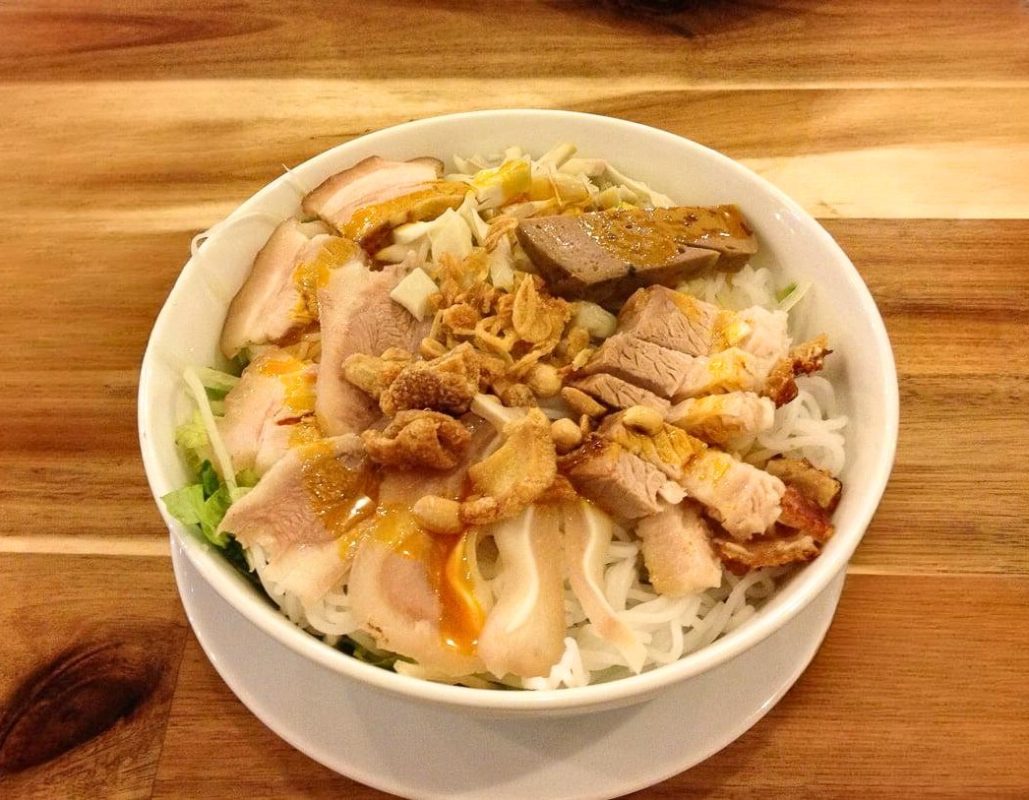
6. Bánh Căn (Miniature Rice Pancakes)
Bánh Căn is a dish consisting of small pancakes, baked in small clay, molds over charcoal. It is often eaten as a snack and is accompanied by a sweet and sour fish sauce with minced chili and garlic.
Bánh Căn is a small, crispy and spongy round dish. The dough is made from rice flour, water, coconut milk and turmeric, which gives the cake its yellow color. The cake is also stuffed with various toppings, such as shrimp, pork and quail eggs. The cake is baked until golden and crispy, then flipped over and baked again.
Bánh Căn is a dish with many toppings, spices and variations, depending on local preferences.
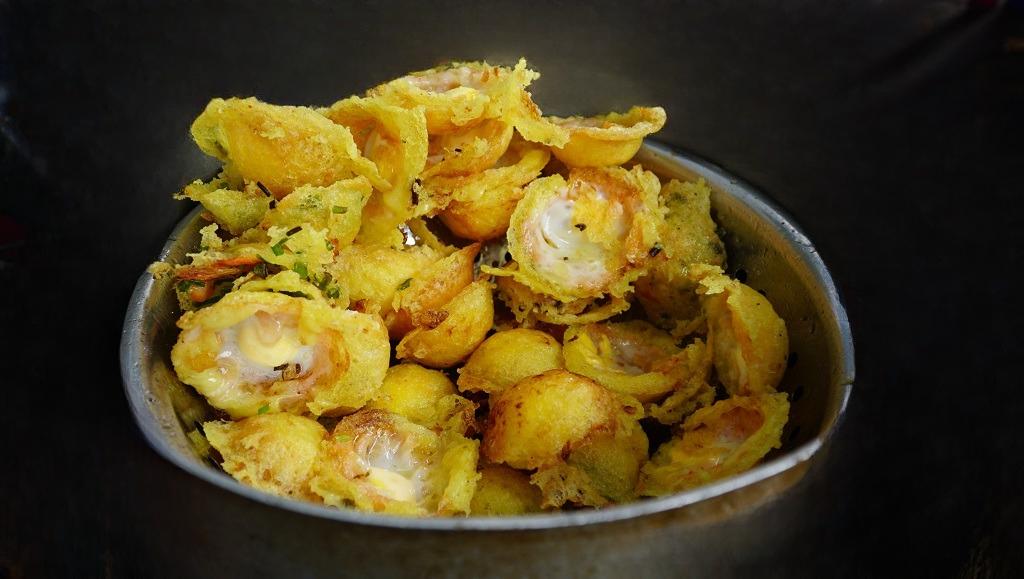
7. Banh Canh (Thick Noodle Soup)
Da Nang’s Banh Canh features thick, chewy noodles that are distinctly different from the thin varieties found in Pho or Bun. The noodles are made from a combination of rice and tapioca flour, creating a unique texture that holds up well in the rich broth.
Popular variations include:
- Banh Canh Cua (with crab)
- Banh Canh Cha Ca (with fish cakes)
- Banh Canh Tom (with shrimp)
- Banh Canh Gio Heo (with pork knuckle)
8. Be Thui Cau Mong (Roasted Veal)
This special occasion dish showcases Da Nang’s meat preparation expertise. Young veal is marinated with local spices and slow-roasted until the skin is crispy and the meat is tender. It’s typically served at celebrations and gatherings.
The traditional serving includes:
- Thinly sliced roasted veal
- Rice paper and fresh herbs
- Special tamarind dipping sauce
- Pickled vegetables
9. Banh Xeo (Vietnamese Crispy Pancake)
While Banh Xeo exists throughout Vietnam, Da Nang’s version is distinctively different. These golden, crispy crepes are smaller and thicker than their Southern counterparts, creating the perfect ratio of crispy exterior to savory filling.
The Da Nang style includes:
- Fresh shrimp and pork belly as primary fillings
- Mung bean sprouts for crunch
- A special fish sauce blend unique to Central Vietnam
- Wrapped in rice paper with fresh vegetables and herbs
“The secret to perfect Banh Xeo lies in the batter temperature and the heat of the pan. Too hot and it burns; too cool and it won’t crisp properly.” – Chef Nguyen Van Thanh, local Banh Xeo expert
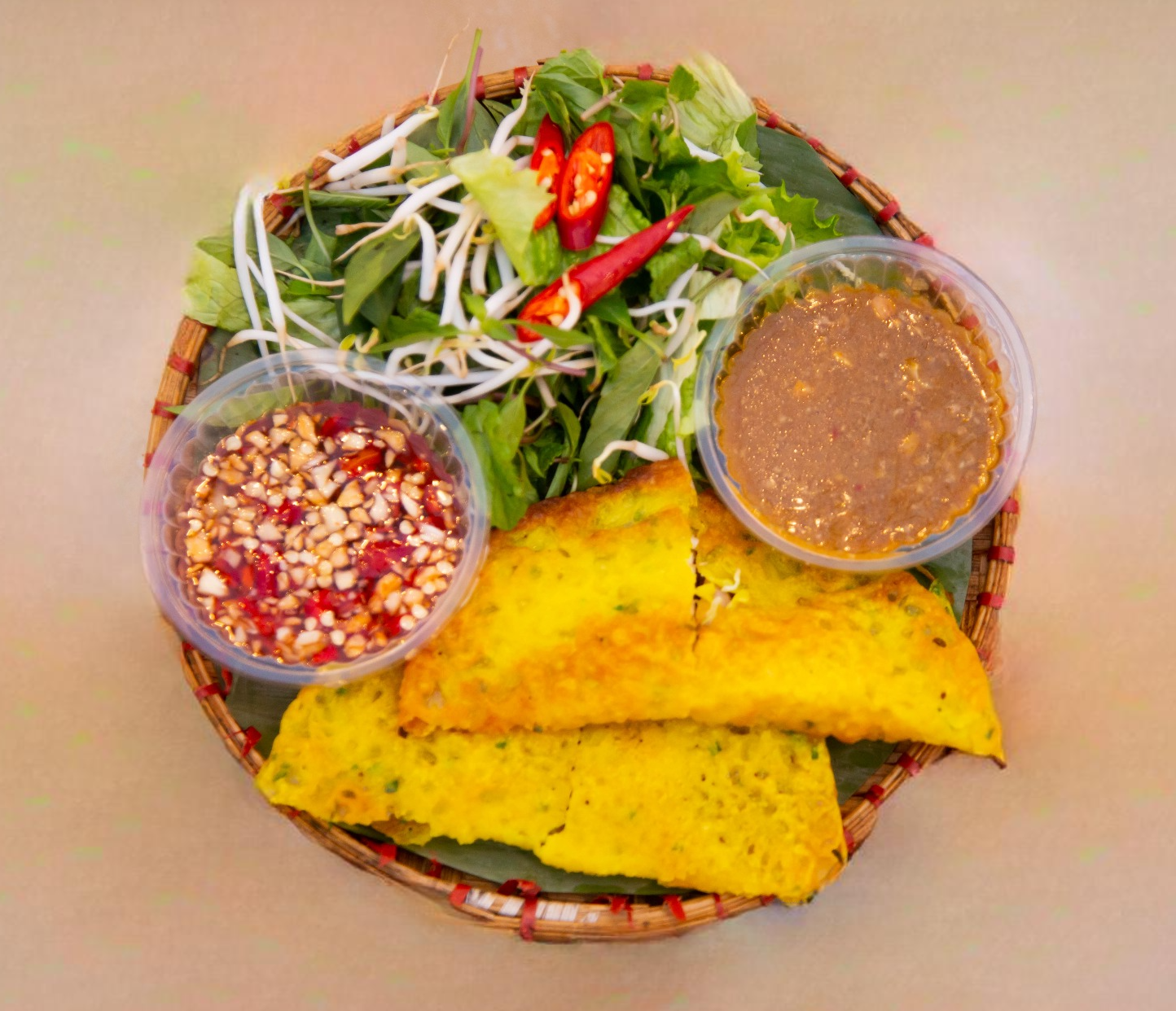
10. Che (Sweet Dessert Soup)
No Da Nang food journey is complete without trying the local Che varieties. These sweet soups provide the perfect ending to any meal, with combinations that reflect local preferences and available ingredients.
Popular Da Nang Che varieties:
- Che Bap (corn and coconut milk)
- Che Ba Mau (three-color dessert)
- Che Chuoi (banana and tapioca)
- Che Buoi (pomelo and coconut)
Where to Find the Best Da Nang Food
Finding authentic Da Nang specialties requires knowing where locals eat. Here’s your essential guide:
Street Food Areas
- Con Market: Best for morning dishes like Mi Quang and Bun Cha Ca
- Helio Night Market: Perfect for evening snacks and seafood
- Bach Dang Street: Riverside dining with fresh catches
Traditional Restaurants
- Quan Com Hue Ngon: Authentic Central Vietnamese cuisine
- Madame Lan Restaurant: Upscale versions of local classics
- Be Anh Restaurant: Famous for traditional preparations
For more detailed restaurant recommendations, visit our complete Da Nang restaurant guide.
Best Time to Enjoy Da Nang Food
Understanding when to eat what can enhance your Da Nang culinary experience:
| Time | Best Dishes | Where to Find |
|---|---|---|
| Early Morning (6-9 AM) | Mi Quang, Banh Canh, Com Ga | Local markets, street vendors |
| Lunch (11 AM-2 PM) | Bun Cha Ca, Com Ga, Banh Xeo | Restaurants, food courts |
| Evening (5-9 PM) | Nem Lui, seafood dishes, Banh Trang Cuon | Night markets, seafood restaurants |
| Late Night (9 PM-12 AM) | Che, light snacks | Dessert shops, street carts |
Tips for Food Lovers Visiting Da Nang
To make the most of your Da Nang food adventure, keep these insider tips in mind:
- Start early: Many specialty dishes sell out by mid-morning
- Bring cash: Most street vendors don’t accept cards
- Learn basic phrases: “Ngon qua” (delicious) goes a long way
- Try everything: Portions are usually small, allowing you to sample more
- Ask locals: They’re usually happy to share their favorite spots
“The best Da Nang food experiences come from being adventurous. Don’t just stick to tourist areas—venture into local neighborhoods where the real culinary magic happens.” – Lonely Planet Vietnam Guide
Conclusion: Your Da Nang Food Journey Awaits
Da Nang’s culinary scene offers an incredible journey through Central Vietnamese cuisine, from humble street food stalls to refined restaurant experiences. Each of these 10 specialties tells a story of the city’s history, culture, and the passion of its people for good food. Whether you’re planning your first visit or returning to explore more, these dishes provide an authentic taste of what makes Da Nang one of Vietnam’s most exciting food destinations. Start planning your culinary adventure today, and don’t forget to come hungry—with so many incredible dishes to try, you’ll need the appetite!
For more travel tips and food guides, explore our SAMTOUR VIETNAM resources, where we share insider knowledge to help you experience the best of Vietnamese culture and cuisine.




